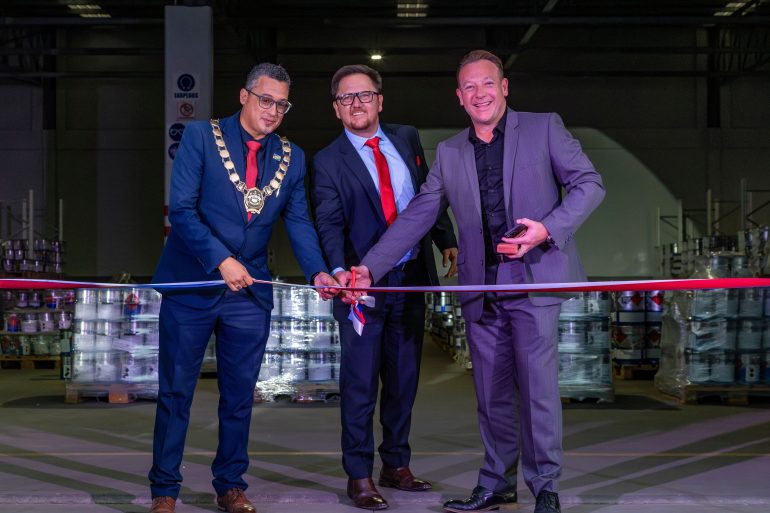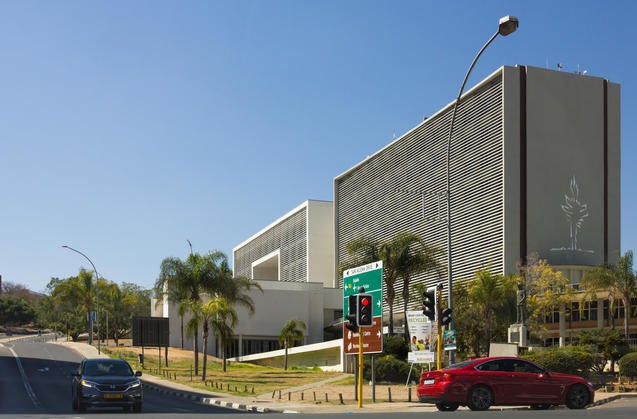Omanyano ovanhu koikundaneki yomalungula kashili paveta, Commisiner Sakaria takunghilile
Veronika Haulenga
Omanyano ovanhu koikundaneki yomalungula kashili paveta, Commisiner Sakaria takunghilile
Veronika Haulenga
Listeners:
Top listeners:
-
play_arrow
Omanyano ovanhu koikundaneki yomalungula kashili paveta, Commisiner Sakaria takunghilile Veronika Haulenga
In the vast landscape of the Palmwag Concession in Namibia’s Damaraland, Wilderness Desert Rhino Camp is undergoing an extensive rebuild. The reinvigorated camp is set to reopen in July 2024 with an elegant new look and feel. Continuing to pay homage to its natural desert surrounds, the camp is a celebration of its inspiring conservation success story – the ongoing protection of one of the world’s last free-roaming Critically Endangered black rhino populations.
“Everything we do at Desert Rhino Camp (DRC) revolves around our pioneering partnership with Save the Rhino Trust (SRT) Namibia and the famed ‘Big 3’ community conservancies in the area. Our conservation purpose is 100% why we’re here. And why we invite guests to witness, learn, and participate in our efforts to help protect the desert-adapted black rhino”, noted Alex Henderson, Wilderness Namibia MD.
Over the last two decades, DRC has remained a favourite among Wilderness guests due to its passionate staff who ensure a meaningful guest experience, and the momentous conservation impact DRC has had as a monitoring outpost for SRT. The camp will remain a base for one of the SRT’s skilled tracking teams, with their operational costs covered by Wilderness. SRT is responsible for leading all the rangers’ activities, while ensuring all data are collected, processed and secured. This partnership has empowered SRT to successfully increase its range by 20%, while consistently contributing to the largest, longest-running black rhino database in the world.
Guests visiting DRC make a crucial contribution to the protection of this endangered species. As part of the lease agreement, Wilderness provides financial remuneration and employment opportunities to the conservancies, positively uplifting the local communities. Approximately 11% of the total DRC revenue is shared between the conservancies, SRT and rhino fundraising support. This contribution exceeds the total sustainable profit made by the camp in the last five years.
“Now, 20 years on, we are excited to be rebuilding the camp, to offer a spectacular new design that will blend as seamlessly as possible into DRC’s magnificent desert environment, telling the unique story of the rhino, while in every way enhancing our guests’ comfort and experience”, Alex added.
The rugged scenery has inspired the décor’s colours and textures, further strengthening the camp’s connection to this immense, arid area. As shown in the architectural renders, the camp will have large stretch-fabric roof structures with deep overhangs that provide shade and protection without compromising the horizon-wide views. With details of stone, timber, and leather, the tent interiors have been noticeably inspired by the explorer age, overlaid with a stylish and contemporary feel.
“Our main focus at DRC is on the black rhino. It’s why we’re here: to defend, preserve, and expand this iconic Namibian wild area for the resilient desert-adapted wildlife that survive against the odds. This camp, where it started, what it stands for, and our pioneering conservation coalition with SRT and the three conservancies, will continue to captivate and inspire all who are privileged to visit. We look forward to welcoming our guests to our stunningly reimagined DRC in 2024”, Alex concluded.
Written by: Staff Writer
Black Rhino community conservancies Conservation Damaraland Namibia Palmwag Concession rhino monitoring Save the Rhino Trust SRT sustainable tourism Wilderness Desert Rhino Camp Wildlife Conservation
Similar posts
Most popular

Omuhwahwameki Michael okuunganeka oshikonga shoku patitha oostola dho Rani moshilongo ashihe.

Justice Served: Jandre Dippenaar Found Guilty of Six Murders in Swakopmund Court

The Alexforbes Lead Story – 12 December

Obituary: Hage G Geingob 3 August 1941 – 4 February 2024

Brazilian Tourist Arrested for Culpable Homicide in Fatal Otavi Collision
Copyright 2024 Future Media (Pty) Ltd | Website by Digital Platforms
Tel: +264 83 000 1000 | Email: news@futuremedia.com.na






